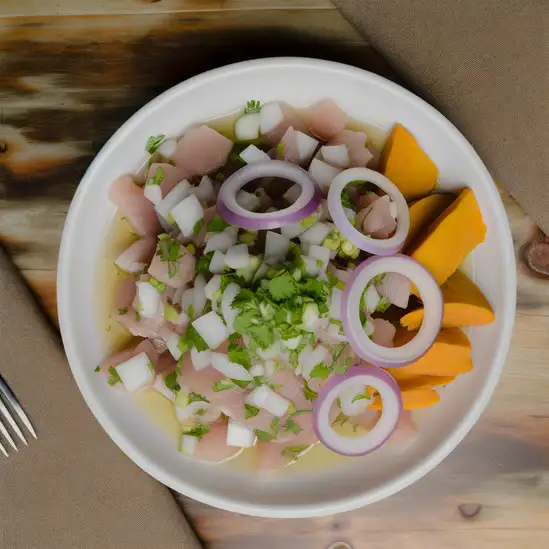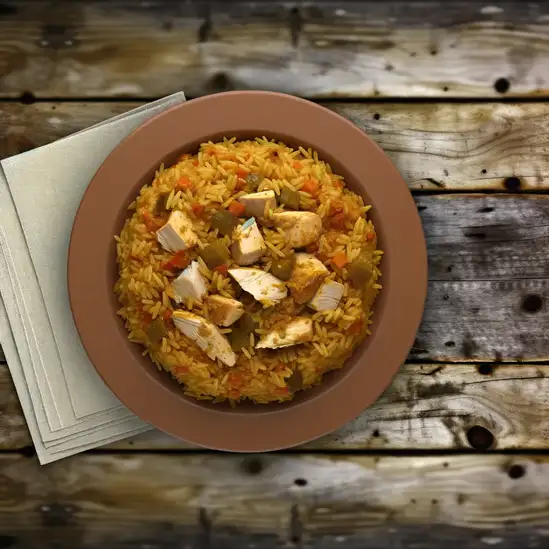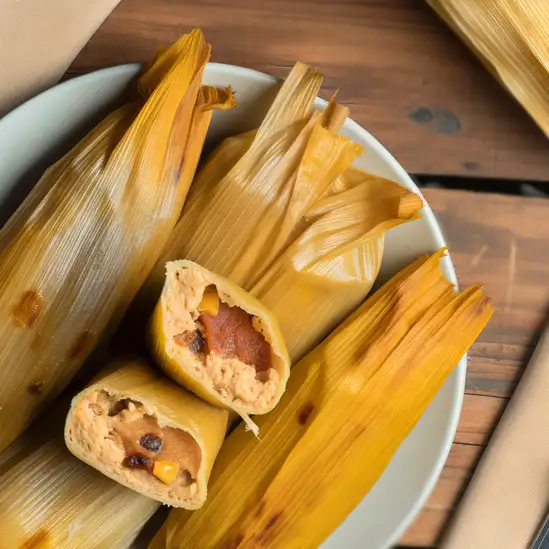



San José pulses with a lively,unpretentious energy that instantly makes you feel like you’ve stepped into the heart of Costa Rica’s everyday life. It’s not about polished tourist spots here; it’s about the rhythm of the streets,where vendors call out their fresh fruit and the scent of strong coffee mingles with the warm,tropical air. Walking through the city,you’ll catch the vibrant colors of murals splashed across old colonial buildings,and hear the chatter of locals animatedly discussing football or the latest news at a corner café. The city’s character is a blend of old and new — from the grand National Theater with its ornate architecture to the bustling Mercado Central,where you can taste authentic gallo pinto or sip on a sweet,refreshing agua de sapo. There’s a genuine warmth in the people here; they’re proud of their culture and eager to share stories about their country’s rich history and natural wonders. What makes San José truly unique is how it feels like a gateway to the rest of Costa Rica’s wild beauty,yet it stands strong on its own as a place full of life and surprises. Whether you’re wandering through leafy parks,catching a local art exhibit,or simply soaking in the city’s vibrant street scenes,San José invites you to slow down,breathe in the moment,and connect with the soul of Costa Rica.
The information on this page is currently being reviewed by Tripkliq and should be used as a guide only
Eng word: Hello
Eng pronunciation: OH-lah
Local language: Hola
Eng word: Goodbye
Eng pronunciation: ah-DYOS
Local language: Adiós
Eng word: Thank you
Eng pronunciation: GRAH-syahs
Local language: Gracias
Eng word: How much
Eng pronunciation: KWAN-toh KWEH-stah
Local language: ¿Cuánto cuesta?
Eng word: Toilet
Eng pronunciation: BAH-nyoh
Local language: Baño
Eng word: Help me
Eng pronunciation: ah-YOO-dah-meh
Local language: Ayúdame
Eng word: Yes
Eng pronunciation: SEE
Local language: Sí
Eng word: No
Eng pronunciation: NO
Local language: No
Eng word: Excuse me
Eng pronunciation: pehr-DOHN
Local language: Perdón
San José was officially founded in 1737, making it one of the youngest capitals in Latin America. It was established as a small village called 'Villa Nueva de la Boca del Monte' and later grew into the bustling city it is today.
In 1884, San José became one of the first cities in the world, and the first in Latin America, to be illuminated by electric streetlights, showcasing its early adoption of modern technology.
The National Theater, built in 1897, is one of San José's most iconic landmarks. It is renowned for its stunning neoclassical architecture and serves as a cultural hub for performances and events.
San José played a pivotal role in Costa Rica's transition to democracy. The city was central to the abolition of the military in 1948, making Costa Rica one of the few countries in the world without an army.
San José is home to the Pre-Columbian Gold Museum, which houses an impressive collection of over 1,600 gold artifacts dating back to 500 AD, offering visitors a glimpse into Costa Rica's rich indigenous history.
Established in 1880, the Central Market in San José is a vibrant hub of local culture, offering traditional foods, handcrafted goods, and a glimpse into the daily life of Costa Ricans.
The Jade Museum in San José boasts the world's largest collection of pre-Columbian jade artifacts, showcasing the artistry and craftsmanship of Costa Rica's ancient civilizations.
San José's growth in the 19th century was fueled by the coffee industry. Known as 'golden beans,' coffee exports brought wealth and development to the city, shaping its history and culture.
Once the site of San José's first international airport, La Sabana Metropolitan Park is now the city's largest urban park, offering a green oasis for recreation and relaxation.
In San José, the most common Power Adaptor is Type A, Type B.



Fresh fish or seafood marinated in lime juice, mixed with onions, cilantro, and peppers, served as a refreshing appetizer.

A classic dish of rice cooked with chicken, vegetables, and spices, often served at family gatherings and celebrations.

Corn dough filled with meat, vegetables, or cheese, wrapped in banana leaves and steamed, often enjoyed during special occasions.

A traditional Costa Rican dish made of rice and black beans, often served for breakfast with eggs, sour cream, and fried plantains.

A typical lunch dish that includes rice, beans, a protein (like chicken, beef, or fish), salad, and fried plantains.

A hearty beef and vegetable stew that includes potatoes, carrots, corn, and plantains, often enjoyed as a comforting meal.

A popular bar snack made of rice, beans, fried pork, and topped with pico de gallo and avocado, served in a bowl.

A black bean soup flavored with spices and served with hard-boiled eggs, often garnished with cilantro and served with rice.
A vibrant capital city known for the Panama Canal,its historic Casco Viejo district,and proximity to the San Blas Islands,a stunning archipelago with pristine beaches and indigenous culture.
ExploreManagua has this vibrant pulse that grabs you the moment you step off the plane. It’s a city where the past and present dance together—colonial architecture stands shoulder to shoulder with colorful street art,and the hum of bustling markets blends with the distant rumble of volcanoes. Walking through its neighborhoods,you’ll catch the scent of fresh tortillas mingling with the earthy aroma of coffee roasting nearby. The air feels warm and alive,like the city itself is breathing alongside you.
What really makes Managua special is its people. There’s a genuine warmth in the smiles you’ll find at every corner,from street vendors selling ripe mangoes to musicians strumming guitars in the plazas. The city’s rhythm is infectious—lively conversations spill out from open-air cafes,and the clinking of glasses echoes as locals gather to share stories over a cold Toña beer or a cup of rich Nicaraguan coffee.
Culture here isn’t just something you observe; it’s something you feel. Whether you’re exploring the historic sites like the old cathedral ruins or catching a sunset over Lake Xolotlán,Managua invites you to slow down and soak it all in. It’s a place where every street has a story,every meal is a celebration,and every moment feels like an invitation to connect. If you’re up for an adventure that’s as heartfelt as it is lively,Managua will welcome you with open arms.
Cartagena de Indias feels like stepping into a vibrant,sun-soaked painting where every corner bursts with color and life. The moment you wander through its cobblestone streets,you’re wrapped in the warm embrace of colonial charm mixed with Caribbean energy. Brightly painted balconies overflow with bougainvillea,and the salty breeze carries the distant rhythm of cumbia and salsa,inviting you to move with the city’s heartbeat. It’s a place where history isn’t just in museums—it’s alive in the laughter spilling from open-air cafes and the clinking of glasses filled with tangy,refreshing aguardiente.
As you stroll along the ancient city walls,the scent of grilled seafood mingles with tropical fruit from street vendors,tempting your taste buds to dive into fresh ceviche or a juicy mango. The sun sets in a blaze of orange and pink over the bay,and the city lights flicker on,casting a golden glow that makes every evening feel magical. Locals greet you with genuine warmth,eager to share stories about Cartagena’s rich past and vibrant present.
What makes Cartagena truly unforgettable is its blend of old-world romance and lively modern spirit. From the bustling plazas where artists display their work to the quiet corners where you can sip a cold cocktail and watch the world go by,the city invites you to slow down and savor every moment. It’s a place that stays with you long after you leave,whispering promises of return.
Imagine stepping into a place where the turquoise waves gently kiss powdery white sands,and the sun wraps you in a warm,golden embrace—that’s Cancún. From the moment you arrive,there’s this vibrant energy buzzing in the air,a mix of laid-back beach vibes and lively city pulse. Palm trees sway rhythmically to the ocean breeze,and the salty scent of the sea mingles with the tantalizing aroma of fresh street tacos sizzling nearby. It’s a place where every sunset feels like a private show,painting the sky in fiery oranges and soft pinks.
Walking through Cancún’s Hotel Zone,you’ll hear the laughter of friends clinking glasses of tangy margaritas,the distant beat of Latin music inviting you to dance,and the chatter of locals sharing stories in colorful markets. The city’s character shines through its blend of modern resorts and ancient Mayan roots,with nearby ruins whispering tales of a rich history that’s still alive in the vibrant culture and warm smiles of the people.
What really makes Cancún unforgettable is how it balances adventure and relaxation. You can dive into crystal-clear cenotes,explore coral reefs teeming with life,or simply lounge under a palapa,feeling the sun on your skin and the gentle sway of a hammock. And when hunger strikes,fresh ceviche bursting with citrus and spice,or a sweet slice of mango dripping with juice,remind you that this place is as much a feast for your taste buds as it is for your soul. Trust me,Cancún isn’t just a destination—it’s a feeling you’ll want to carry with you long after you leave.
Imagine stepping into a place where time seems to slow down,yet every corner buzzes with life—that’s Havana. The city greets you with a warm,sun-soaked embrace,where pastel-colored buildings wear their peeling paint like badges of history. Walking through its streets,you’ll hear the soulful strum of a guitar mingling with the distant chatter of locals sharing stories over strong Cuban coffee. The air carries a mix of salty sea breeze,sweet tobacco,and the faint aroma of frying plantains from street vendors.
Havana’s character is a beautiful blend of resilience and celebration. Classic American cars,polished to a shine,cruise alongside vintage bicycles,creating a moving museum of the past. The city pulses with music—whether it’s the lively beats spilling out of a neighborhood bar or the soft rhythms of a late-night jazz club. People here have a way of making you feel like you belong,inviting you to dance,laugh,and savor life’s simple pleasures.
Don’t miss the chance to sip a perfectly crafted mojito in a sunlit plaza,watching the world drift by. Taste the rich,smoky flavors of Cuban cuisine,from ropa vieja to fresh seafood caught that morning. Havana isn’t just a place to visit; it’s a place to feel alive,to soak in stories etched into every brick and smile. Trust me,once you’ve wandered its vibrant streets,Havana’s spirit stays with you long after you leave.
Kingston pulses with a vibrant energy that grabs you the moment you step off the plane. It’s a city where the rhythm of reggae music seems to float through the air,blending effortlessly with the chatter of street vendors and the hum of bustling markets. Walking through its colorful neighborhoods,you’ll catch the scent of jerk spices mingling with the salty breeze from the nearby harbor. There’s a raw,authentic spirit here that feels alive in every corner—from the murals that splash stories across walls to the lively conversations spilling out of local cafes.
What makes Kingston truly unforgettable is its rich cultural heartbeat. This is the birthplace of Bob Marley,and you can feel his legacy everywhere—from the iconic Trench Town neighborhood to the reggae museums that celebrate Jamaica’s musical soul. But it’s not just about music; the city’s art scene,street food,and warm,welcoming people create a tapestry of experiences that invite you to slow down and soak it all in. Grab a plate of fresh ackee and saltfish or sip on a cold Red Stripe while watching the sunset paint the sky in fiery hues.
Kingston isn’t polished or pristine,but that’s exactly what makes it magnetic. It’s a place where history,culture,and everyday life collide in the most colorful,unexpected ways. If you’re up for an adventure that’s as much about feeling the city’s pulse as seeing its sights,Kingston will surprise you—and stay with you long after you leave.
Scammers install skimming devices on ATMs to steal card information and PINs from unsuspecting users.
Tourists may be given incorrect change or counterfeit bills when paying in cash, especially in USD or colones.
Scammers impersonate police officers and demand to see passports or wallets, then steal cash or valuables.
Some taxi drivers overcharge tourists by not using the meter (called 'maría') or by taking unnecessarily long routes.
Scammers pose as tour guides offering cheap tours but provide subpar experiences or disappear after taking payment.
Shops in tourist-heavy areas may charge significantly higher prices for souvenirs compared to local markets.
Thieves target crowded areas like bus stations, markets, and tourist attractions to steal wallets, phones, or other valuables.
Car rental companies or scammers claim pre-existing damage to vehicles and charge tourists exorbitant repair fees.
Individuals approach tourists with fabricated stories of hardship to solicit money or donations.
In bars or clubs, drinks may be spiked to incapacitate tourists, making them vulnerable to theft or assault.
Vendors may sell fake or low-quality goods at inflated prices, claiming they are authentic or handmade.
Tourists are lured into attending high-pressure sales presentations for timeshares that are overpriced or nonexistent.
Costa Rica has strict drug laws. Possession, use, or trafficking of illegal drugs is a criminal offense and can result in severe penalties, including imprisonment. While small amounts of marijuana for personal use are decriminalized, it is still not legal to buy, sell, or use it in public. Tourists should avoid any involvement with illegal drugs to avoid legal trouble.
In San José, Costa Rica, smoking is prohibited in all public spaces, including parks, bus stops, restaurants, bars, and workplaces. The country has strict anti-smoking laws under the Tobacco Control Law, and violators can face fines. Smoking is only allowed in designated smoking areas, which are rare. Tourists should be mindful of these restrictions to avoid penalties.
Vaping is regulated similarly to smoking in San José, Costa Rica. The use of electronic cigarettes is prohibited in public spaces where smoking is banned. This includes indoor and outdoor public areas, such as parks, restaurants, and transportation hubs. Tourists should avoid vaping in public spaces unless they are in a designated area.
What are other people saying about San José?
Recent Social posts about San José
There is nothing to show you for now.